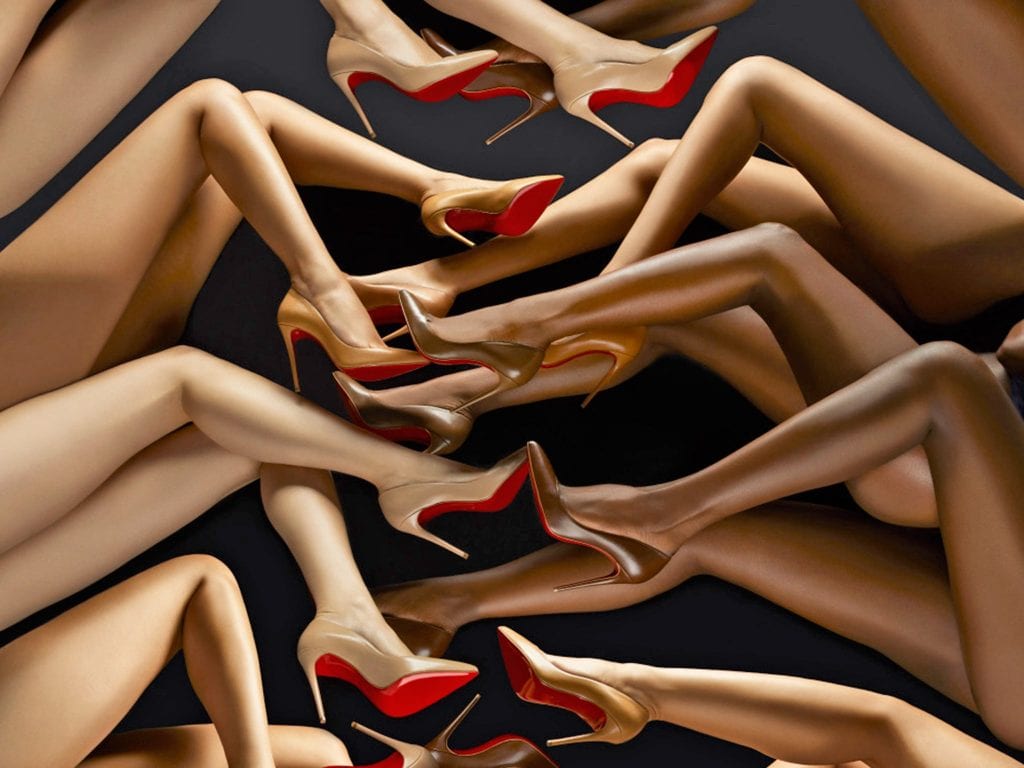In 2012, Christian Louboutin made headlines in connection with the trademark case it initiated against Yves Saint Laurent. A federal Court of Appeals determined that its red sole trademark – for use on high heels shoes of a contrasting color – is, in fact, a valid mark. In issuing its opinion, the U.S. Court of Appeals for the Second Circuit shot down the lower court’s determination that color per se can never be a valid trademark for fashion-related products, such as footwear, and handed Louboutin a partial win.
“While Louboutin failed to obtain the relief it sought,” which was an injunction barring YSL from selling all-over red shoes complete with red soles, because its trademark rights are limited to instances in which the role sole contrasts with the color of the upper of the shoe, the decision, nonetheless, created a “basis for future enforcement against competitors who imitate the distinctive Louboutin contrasting red sole,” Foley & Lardner’s Andrew Baum wrote at the time. More broadly, he noted, the Second Circuit’s decision was “a victory for trademark owners who seek to incorporate a nonfunctional color into their overall branding scheme.”
On the heels of its case against YSL in the U.S., Louboutin set out on a tour de force aimed at formally amassing and/or enforcing rights in other jurisdictions, including Switzerland, France, Belgium, China, India, and Japan. What has come of that quest has been nothing short of time-consuming and resource-intensive, and at times, the results have been mixed. On one hand, the validity of the famed footwear brand’s trademark has been upheld by a series of important decisions, including ones from the Paris Court of Appeal, the Court of Justice for the European Union, the Hanseatic Court of Appeals in Germany, the Beijing High Court, and the European Union Intellectual Property Office, among others.
At the same time, though, Louboutin has not necessarily fared well in other countries, including Japan, where the Paris-based brand is currently in the midst of an appeal over the protectability of its red sole as a trademark.
Interestingly, the notion of color trademarks is not entirely novel in Japan, with the Japanese Ministry of Economy, Trade and Industry announcing in March 2017 that the Japan Patent Office (“JPO”) had registered the first two standalone color marks: one for the blue-white-black colors that appear on the packaging of Tombow’s “Mono” eraser, and another for the orange, green, and red signage that adorns 7-Eleven’s stores. The registrations came on the heels of an amendment to the Trademark Act of Japan, which, as of its enactment in April 2015, allows for the registration of nontraditional marks, including color and sound.
Speaking about the registerability of colors in 2017, the JPO’s trademarks division director Sunao Sato said that this “new type of trademark is expected to play a major role in corporate brand strategy as a means of disseminating various brands” as opposed to simply via word marks or logos.
Since then, the JPO has issued registrations for a number of other color-centric marks – from Sumitomo Mitsui Financial Group’s dual greens to the color scheme of Mitsubishi Pencil’s maroon “UNI” pencil, complete with a black band. As Osaka-based trademark attorney Masaki Mikami recently noted, all of the color marks that have been registered by the JPO to date consist of more than two colors, with the national trademark body refusing to register a single color as a trademark as of now.
With that in mind, Louboutin has not the first company to face pushback over its quest for a single color mark. The trademark application that Hitachi Construction Machinery filed in 2015 for a specific color orange for use on “hydraulic excavators, wheel loaders, road loaders, loaders, and dump trucks” was rejected by the JPO – and ultimately, the IP High Court – which found that the color has not acquired distinctiveness as a source indicator of Hitachi’s hydraulic excavators.
Similarly, in furtherance of the larger trend in rejections of color marks on the basis that they “lack of distinctiveness and [the applicants fails] to demonstrate acquired distinctiveness,” an application filed by Hermès for a three-color combination mark for use in classes 14 (jewelry), 18 (leather goods), and 25 (clothing) was rejected by the JPO.
Hermès has since been granted registrations for the same Red (Pantone 2028C), yellow/orange (Pantone 1235C) and blue (Pantone 295 C) mark for use on those same types of goods in the U.S., France, Australia, the Philippines, and with the World Intellectual Property, with such different outcomes potentially serving as a demonstration of what Mikami calls the “significantly high hurdle to clear” when it comes to color marks in Japan.
A further indication of the difficulty with which brands have had in amassing color-specific registration in Japan? The strikingly slim success rate for color applications. Mikami notes that as of November 15, 2020, 543 applications for color marks were filed with the JPO. As for the number of those applications that have resulted in registration: a mere eight, which makes for a 1.5 percent “success rate.”
Ultimately, Mikami tells TFL that this trend, which has seen the eight existing color registrations issued exclusively to large companies, may “imply that the JPO considers color marks to be unavailable for registration without enormous investment” by the filing party, which means that “smaller companies and startups cannot take advantage of color marks as a branding tool at all, contrary to other traditional and non-traditional trademarks, e.g. name, shape, logo (design), position, motion.”
Maybe Louboutin will be one of the outliers, although, it seems unlikely.











